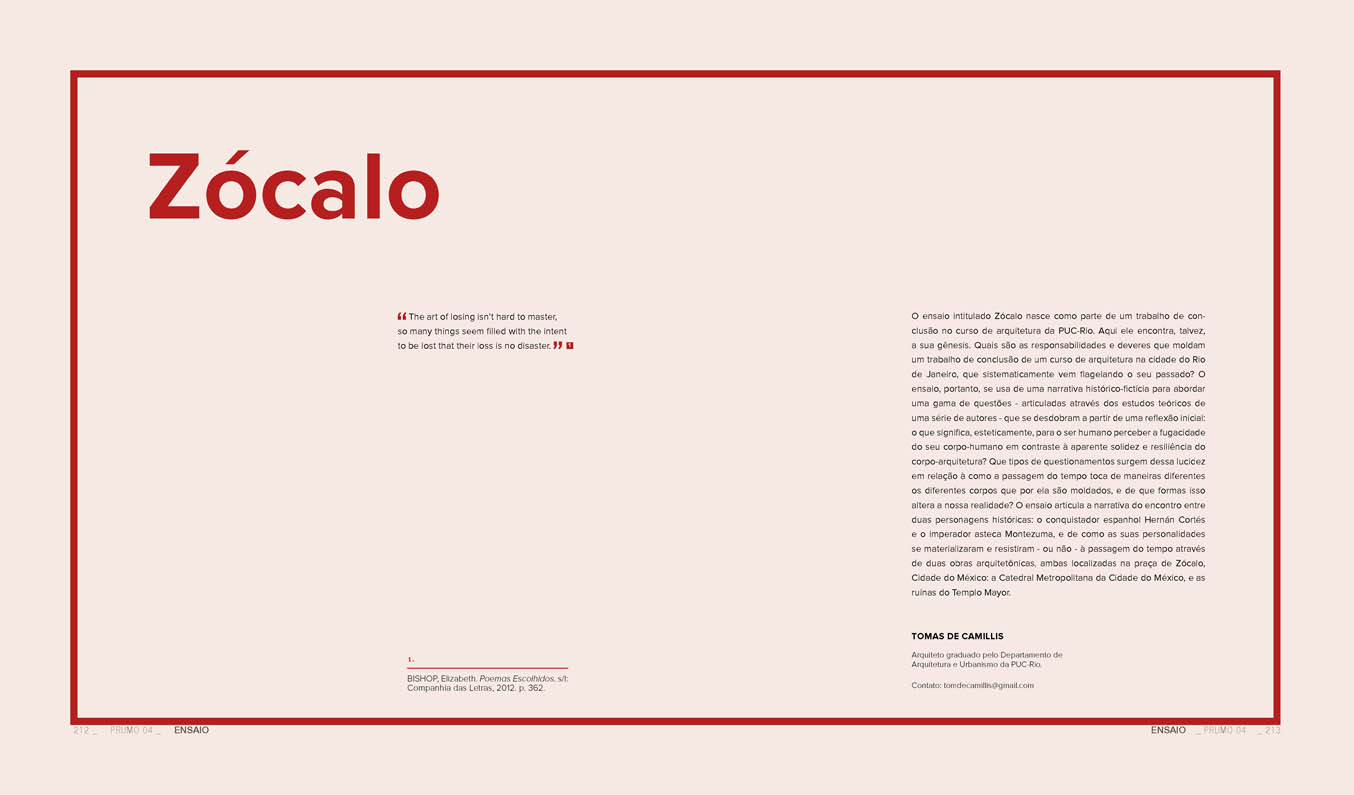Zócalo
Abstract
The essay titled Zócalo it begins as part of a work of conclusion in the architecture course of PUC Rio. Here it finds, perhaps, its genesis. What are the responsibilities and duties that shape the completion of an architec-ture course in the city of Rio de Janeiro, which has systematically been plaguing its past? The essay, therefore, is used from a historical-fictional narrative to address a range of questions - articulated through the theoretical studies of a series of authors - that develop from an initial reflection: what aesthetically means to be to perceive the fugacity of his human body in contrast to the apparent solidity and resilience of architecture-body? What kinds of questions arise from this lucidity as to how the passage of time touches in different ways the different bodies that are shaped by it, and in what ways does this change our reality? The essay articulates the narrative of the meeting between two historical figures: the Spanish conquistador Hernán Cortés and the Aztec emperor Montezuma, and how their personalities materialized and resisted - or not - the passage of time through two architectural works, both located in the Plaza de Zócalo, Mexico City: the Metropolitan Cathedral of Mexico City, and the ruins of the Templo Mayor.
Key-words: Zócalo, México City, Templo Mayor.







